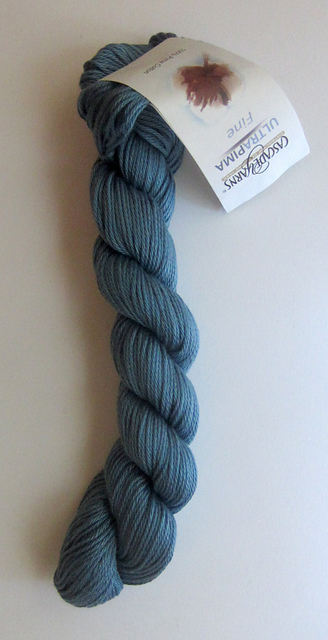
Many knitters are inspired to pick up their needles in the fall and winter to create wearables for the colder weather and gifts for the winter holidays, but summer can be a wonderful time to knit, too, especially if you choose your yarns and projects wisely.
To keep your knitting fun – and comfortable – during
Many knitters are inspired to pick up their needles in the fall and winter to create wearables for the colder weather and gifts for the winter holidays, but summer can be a wonderful time to knit, too, especially if you choose your yarns and projects wisely.
To keep your knitting fun – and comfortable – during the summer months, consider these four tips:
Go lighter!
You may feel more inspired to knit with lighter weight yarns in the summer. Lace, superfine, and fine weight yarns (also known as fingering, sock, and sport weight yarns, respectively) are great options for the summer months. With thinner yarns, you can create projects that are useable as soon as they come off the needles. Projects made with thinner yarns are also lighter when on the needles, so they may be easier to work with as temperatures rise. Finally, lighter weight yarns have more yardage per ounce, so you create a myriad of projects with just one or two skeins of yarn.
Move lower on the food chain!
Another option for increasing knitting comfort in the summer is to focus on plant fibers. Animal fibers like wool, alpaca and mohair are primarily known for their insulating properties, so many knitters find these fibers are too oppressive against the skin in the warm weather. Similarly, synthetic yarns often retain heat and can be uncomfortable to knit with in the summer months.
Plant-based fibers are breathable and comfortable to knit with in warmer temperatures. Consider cotton, linen, hemp, or bamboo fiber or blends for your summer projects:
Cotton creates a cooling effect because it absorbs moisture and dries fast. Because cotton is inelastic, avoid dense stitch patterns, like cables, which may add weight and stretch out the yarn.
Linen also draws heat away from the body and is quite sturdy. Similar to cotton, it is non-elastic and can sometimes feel stiff. Stiffness usually decreases over time and with washing.
Hemp fiber is extremely strong and soft. It’s even more breathable and absorbent than cotton. Hemp fiber is frequently available blended with other fibers.
Bamboo has a very soft feel but stretches a lot so it’s often mixed with wool to add elasticity. Open work stitches and lace may stretch bamboo even more, but slip stitch patterns work well.
Switch your needles!
Consider swapping out your aluminum needles, which may feel sweaty as heat transfers from your hands and the fiber, for wood or bamboo needles. Similarly, some knitters find that circular needles are more comfortable than straight needles in the summer – even for knitting flat – because bulky projects can be moved away from the hands and wrists to rest on the cords.
Size matters!
Smaller, portable projects can be more comfortable to knit in the summer. Many knitters work on socks or hats, while others switch to motif projects that can be joined later such as blankets or bags. Other great summer project options include kitchen and home décor items like dishcloths, trivets, coasters, and cozies; and lace projects like shawls.
By being thoughtful about your choice of yarn weight, fiber content, needles, and project type, you can enjoy knitting no matter what the weather, and you can keep active in your favorite hobby throughout the warm months of summer. 


m looking forward to doing some summer knitting.
Like the information on picking out summer yarn.knitting.
I am looking forward to doing some summer knitting. It is very hot her in
Redding California in the summer, so it will have to be some very light yarn.